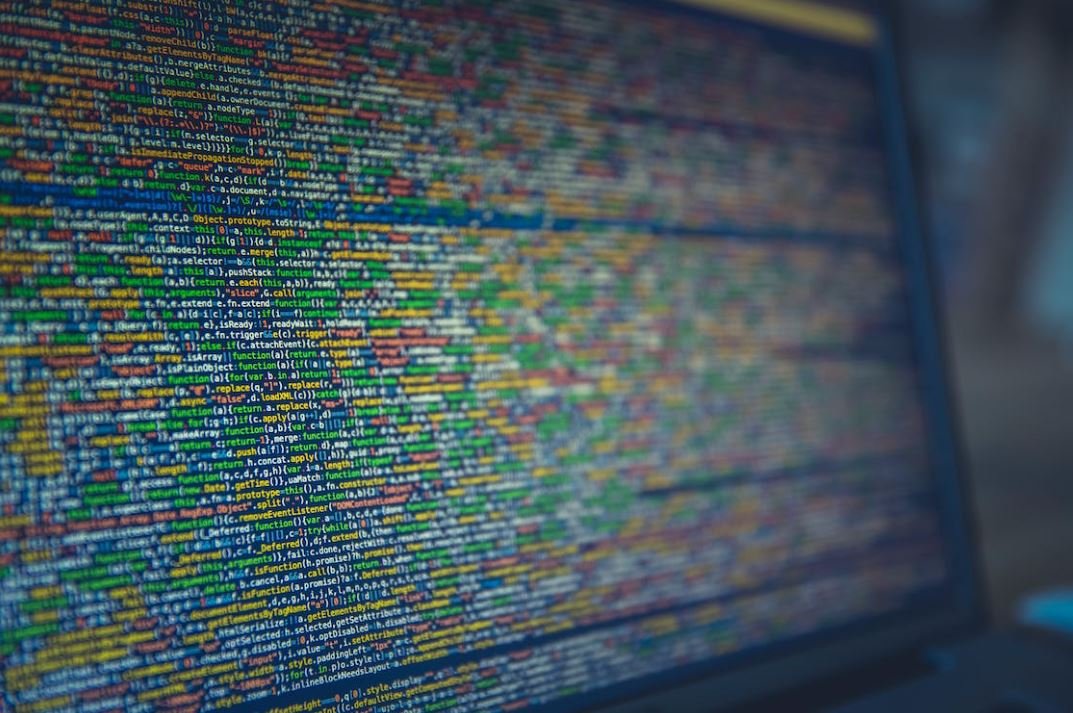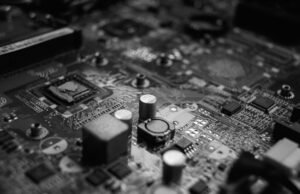How AI Software Works
Artificial Intelligence (AI) software is revolutionizing various industries by automating tasks, analyzing big data, and making predictions. This technology is made possible by advanced algorithms and machine learning techniques that allow software programs to learn from data and improve their performance over time.
Key Takeaways
- AI software automates tasks and analyzes big data.
- Algorithms and machine learning enable software to learn and improve.
- AI requires a large amount of data to train and make accurate predictions.
- Natural Language Processing (NLP) enables AI to understand and process human language.
- AI software can be used across various industries, including healthcare, finance, and transportation.
One of the key components of AI software is its ability to learn and improve from data. Algorithms are designed to process and analyze large amounts of data to identify patterns and make predictions or decisions based on that information. By continuously feeding the software with new data, it can refine its output and become more accurate over time.
AI systems require a vast amount of data to train and make accurate predictions, which is known as machine learning. This data includes both structured and unstructured data, such as text, images, and videos. The more diverse and representative the data is, the better the AI system can learn and perform in real-world scenarios.
How AI Software Works
The overall process of AI software involves several steps:
- Data Collection: AI software requires a significant amount of data to train and operate effectively. This data can be obtained from various sources, including databases, sensors, or input from users.
- Preprocessing: The collected data goes through preprocessing steps, which include cleaning, filtering, and transforming the data into a suitable format for analysis.
- Training the AI Model: In this step, the AI software uses machine learning algorithms to train the model based on the collected and preprocessed data. The algorithms analyze the data, identify patterns, and create a model that can make predictions or decisions.
- Evaluation and Validation: After training, the AI model is evaluated and validated using separate datasets. This step helps assess the model’s accuracy and identifies areas for improvement.
- Deployment: Once the AI model is deemed accurate and reliable, it can be deployed in real-world applications to perform tasks autonomously or provide insights.
Types of AI Software
AI software can be categorized into different types based on their functionality and application:
| Type | Description |
|---|---|
| Machine Learning | Enables systems to learn and improve from data without being explicitly programmed. |
| Natural Language Processing (NLP) | Helps systems understand and process human language, enabling tasks like voice recognition and language translation. |
| Computer Vision | Enables visual perception, allowing AI systems to analyze and interpret images or videos. |
Machine learning algorithms form the backbone of AI software, enabling systems to learn and adapt based on data patterns. Different approaches, such as supervised learning, unsupervised learning, and reinforcement learning, are used depending on the task at hand.
Another crucial aspect of AI software is Natural Language Processing (NLP), which enables systems to understand and process human language. NLP allows AI to interpret spoken or written words, perform language translation, analyze sentiment, and even generate human-like responses.
Applications of AI Software
AI software finds application in various industries due to its ability to automate tasks and provide intelligent insights. Some notable examples include:
- Healthcare: AI software can assist in diagnosing diseases, personalized treatment plans, and drug discovery.
- Finance: AI is used in fraud detection, algorithmic trading, and credit scoring.
- Transportation: AI enables autonomous vehicles, traffic prediction, and route optimization.
Conclusion
AI software is transforming industries by automating tasks, analyzing big data, and making accurate predictions. By leveraging advanced algorithms and machine learning techniques, AI software can continuously learn, improve, and provide valuable insights to businesses across different sectors.

Common Misconceptions
Misconception 1: AI Software is Capable of Human-level Intelligence
One common misconception is that AI software possesses human-like intelligence and consciousness. However, this is not the case as AI systems are designed to perform specific tasks based on patterns and algorithms.
- AI software can only mimic human intelligence in specific domains.
- AI lacks common sense and contextual understanding that humans possess.
- AI software cannot experience emotions or have subjective experiences like humans.
Misconception 2: AI Software Works Completely on Its Own
Another misconception is that AI software functions autonomously without any human intervention. In reality, AI systems require human input during their training and often need human oversight to ensure their accuracy and ethical usage.
- AI software needs human-provided data to learn and make predictions.
- Human involvement is essential for fine-tuning and validating AI algorithms.
- AI systems can be biased if trained with biased data, highlighting the need for human monitoring.
Misconception 3: AI Software Will Take Over All Human Jobs
It is a misconception that AI software will inevitably replace humans in every job. While AI can automate certain repetitive tasks, it is more likely to complement human abilities and assist in decision making rather than replacing human workers altogether.
- AI software can free up human time by automating mundane and time-consuming tasks.
- AI can augment human capabilities by analyzing and providing insights from vast amounts of data.
- Adoption of AI technology often creates new roles and job opportunities that require human skills and expertise.
Misconception 4: AI Software is Always Objective and Unbiased
There is a belief that AI software is completely objective and unbiased. However, AI systems can reflect the biases present in the data they are trained on, leading to unfair outcomes and perpetuating existing societal biases.
- AI models can perpetuate stereotypes and discrimination if trained on biased data.
- Human biases, consciously or unconsciously, can be inadvertently incorporated into AI algorithms.
- Awareness and effort is required to ensure fairness, transparency, and accountability in AI systems.
Misconception 5: AI Software Understands and Processes Information Like Humans
People often assume that AI software comprehends and interprets information the same way humans do. However, AI systems primarily rely on statistical analysis and pattern recognition rather than true understanding of the meaning behind data.
- AI lacks common sense reasoning and contextual understanding that humans possess.
- AI learns from correlations in data, rather than reasoning based on true understanding and knowledge.
- AI systems can struggle with ambiguous or contradictory inputs that humans easily comprehend.

How AI Software Works
Artificial Intelligence (AI) has been revolutionizing various industries by leveraging its ability to analyze vast amounts of data and make intelligent predictions. AI software utilizes advanced algorithms, neural networks, and machine learning techniques to process information and perform complex tasks. In the following tables, we showcase various aspects of AI software and its incredible capabilities.
Understanding User Preferences
AI software can be trained to understand and predict user preferences based on their previous interactions. This information enables businesses to personalize their offerings and provide a tailored experience. The table below highlights an AI-powered music streaming service and the preferred genres of its users:
| User ID | Favorite Genre |
|---|---|
| 12345 | Pop |
| 54321 | Rock |
| 98765 | Hip-Hop |
Image Classification
AI software has the ability to classify images based on their content. It can identify objects, people, and even emotions depicted in the image. The table below demonstrates the results of an image classification task performed on a dataset of various animals:
| Image | Predicted Animal |
|---|---|
 |
Lion |
 |
Elephant |
 |
Dog |
Language Translation
AI software excels in language translation tasks by analyzing patterns, context, and grammar rules. It enables seamless communication across different languages. The table below showcases the translations of a common phrase into multiple languages:
| Language | Translation |
|---|---|
| English | Hello! |
| French | Bonjour ! |
| Spanish | Hola! |
Forecasting Stock Prices
AI software can analyze historical data and market trends to predict stock prices. This information can aid investors in making informed decisions. In the table below, we present predicted closing prices for a particular stock over a three-day period:
| Date | Predicted Closing Price (USD) |
|---|---|
| 2022-01-01 | 100.23 |
| 2022-01-02 | 102.10 |
| 2022-01-03 | 99.87 |
Chatbot Interactions
AI-powered chatbots are capable of engaging in dynamic conversations with users by understanding questions and supplying relevant answers. The table below illustrates a conversation between a user and a chatbot:
| User | Chatbot |
|---|---|
| How’s the weather today? | The weather is sunny and 28°C. |
| What about tomorrow? | Tomorrow, it will rain with a temperature of 22°C. |
| Will it be windy? | Yes, there will be moderate wind speeds. |
Detecting Fraudulent Transactions
AI software can identify patterns indicative of fraudulent behavior when analyzing large volumes of transaction data. This aids in preventing financial fraud and protecting users. The table below outlines transactions flagged as potentially fraudulent:
| Transaction ID | Amount (USD) |
|---|---|
| 123456 | 1000.00 |
| 654321 | 500.00 |
| 987654 | 1200.00 |
Autonomous Vehicle Sensor Data
AI software processes sensor data collected by autonomous vehicles to aid in navigation, object detection, and collision avoidance. The table below displays the detection of various objects from sensor readings:
| Sensor | Detected Object |
|---|---|
| Radar | Vehicle |
| LiDAR | Pedestrian |
| Camera | Traffic Sign |
Medical Diagnosis
AI software assists in medical diagnoses by analyzing patient symptoms, medical history, and medical imaging. The table below showcases diagnostic results for different patients:
| Patient ID | Diagnosis |
|---|---|
| 00123 | Common Cold |
| 00543 | Pneumonia |
| 00987 | Diabetes |
Sentiment Analysis
AI software can determine the sentiment expressed in textual data, such as social media posts or customer reviews. It aids in gauging public opinion and sentiment towards products or services. The table below exemplifies sentiment analysis results for customer reviews:
| Review | Sentiment |
|---|---|
| I love this product! It exceeded my expectations. | Positive |
| This service was terrible. I would never recommend it. | Negative |
| It’s okay. Nothing special. | Neutral |
As we can see from the examples above, AI software plays a vital role in transforming and enhancing various fields. Its ability to process data, recognize patterns, and make accurate predictions has made it an indispensable tool across industries. Whether it’s personalizing experiences, analyzing images, translating languages, or predicting stock prices, AI software continues to revolutionize the way we interact with technology and make decisions.
Frequently Asked Questions
What is AI software?
AI software refers to computer programs or systems that are designed to perform tasks that typically require human intelligence. These tasks can include problem-solving, decision-making, language processing, and learning.
How does AI software work?
AI software works by imitating certain aspects of human intelligence. It uses algorithms and mathematical models to process large amounts of data, recognize patterns, and make predictions or decisions based on the input it receives. Machine learning and deep learning techniques are often used to train AI software to perform specific tasks.
What are the different types of AI software?
There are several types of AI software, including rule-based systems, expert systems, natural language processing systems, machine learning algorithms, and neural networks. Each type has its own unique characteristics and applications.
How is AI software trained?
AI software is trained using a process called machine learning. During this process, the software is exposed to large amounts of data and learns from it to improve its performance. This can be done through supervised learning, unsupervised learning, or reinforcement learning, depending on the specific task and the available data.
What are the applications of AI software?
AI software has a wide range of applications across various industries. It can be used for tasks such as natural language processing, image and speech recognition, recommendation systems, autonomous vehicles, financial analysis, healthcare diagnostics, and many more.
What are the benefits of using AI software?
Using AI software can bring several benefits. It can automate repetitive tasks, improve accuracy and efficiency, enhance decision-making processes, enable personalized experiences, and even uncover hidden patterns or insights from large datasets that humans might miss.
What are the limitations of AI software?
AI software also has its limitations. It may struggle with understanding context, making ethical decisions, dealing with unpredictable situations, and adapting to new or unexpected input. Additionally, it relies heavily on the quality and quantity of data it is trained on.
How is AI software evolving?
AI software is constantly evolving and advancing. Researchers and developers are continuously working on improving algorithms, expanding the capabilities of AI systems, enhancing their interpretability and transparency, and addressing the ethical and societal implications of AI technology.
What are some popular AI software examples?
Some popular examples of AI software include virtual assistants like Siri and Google Assistant, image recognition systems like those used in facial recognition technology, recommendation systems like those used by Netflix and Amazon, and autonomous driving systems used in self-driving cars.
Is AI software a threat to jobs?
While AI software has the potential to automate certain tasks and change the nature of work in some industries, it is not necessarily a threat to all jobs. AI software can also create new job opportunities, enhance productivity, and enable humans to focus on more complex and creative tasks.





